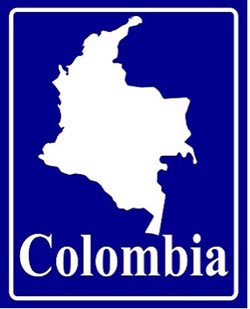By Fabian Ruiz
(This article originally ran in the June 2 edition of the drupa daily.)
 Colombia is home to approximately 52 million people and ranks as the third-largest country in Latin America by landmass, trailing only Brazil and Mexico. Nestled in a strategically advantageous position, it enjoys access to two seas, fostering extensive commercial ties with 16 nations across the Americas, Europe, Asia, and the Middle East.
Colombia is home to approximately 52 million people and ranks as the third-largest country in Latin America by landmass, trailing only Brazil and Mexico. Nestled in a strategically advantageous position, it enjoys access to two seas, fostering extensive commercial ties with 16 nations across the Americas, Europe, Asia, and the Middle East.
While Colombia’s printing and export legacy traditionally revolved around books, recent years have witnessed a notable shift towards packaging for the food industry. Remarkably, over half of the country’s printed exports now cater to this sector.
The country’s graphic community boasts around 27,000 officially recognized printing-related firms*, mainly small-scale printers concentrated in key urban hubs.
- Advertising & Design: 14,426
- Labels: 4,262
- Printing activities: 3,747
- Books & Editorial: 3,670
- Packaging: 1,033
- Periodicals: 687
Source: Official Figures from DANE (National Institute of Statistics), 2023
Unlike its Latin American counterparts, Colombia’s population centers are dispersed, with cities like Medellin, Cali, Bucaramanga, and Barranquilla playing significant roles.
From the supply perspective, there are mills for the manufacture of writing papers as well as cardboard, which also supply other neighboring countries. Likewise, plastic substrates for printing are manufactured, and there are companies that produce inks, associated with major global brands as well as independent entrepreneurs. In addition to importing printing machines (mainly from Germany, Japan, and China), special substrates, enameled papers, lithographic and flexographic plates, offset blankets, chemicals for the pressroom, lighting systems (currently in demand due to the interest in certification under world institutions as we will see later), as well as UV lamps (also growing due to the increase in printing on non-absorbent substrates).
The country, and the printing sector, have not been immune, nor been exceptions to the crisis generated by the COVID pandemic, which reached the country a few months late but arrived nonetheless, with its sad consequences of losses and business closures. However, we are currently experiencing a rebirth, exemplified by more digital printers and significant growth in flexographic printing. Traditional printers have turned to packaging printing, which as we all know is the sector that offers the greatest opportunities for growth and stability in the future.
Colombia also has one of the most traditional institutions among the Graphic Associations of Latin America: Andigraf, representing the printing community to the government, and also supplying education and training programs to its associates and to the industry in general. Lately there has been a strong interest in standardization programs, like the one carried with the Color Education Center (CEC Latam), in order to have Colombian providers participating in the world arena, with ISO12647 badges, giving assurance to international buyers of the quality of the printing goods supplied.
There is also the National Chamber of the Book, which for 33 years has organized its yearly Fair of the Book in Bogota, an International event which is now one of the most important venues of its kind in Latin America.
For this particular drupa show, Andigraf has put together a group of printing entrepreneurs and technical personnel to attend. They are a great source of knowledge and information and could be contacted for product demonstrations, presentations about new materials, processes or software, through WhatsApp: Tatiana Duarte (President) @+57 318 8268118, email: presidencia@andigraf.com.c, or Carol Peña (Marketing Director) @+57 317 5731469, email: Desarrolloempresarial@andigraf.com.co.
Kolumbianische Druckindustrie verlagert sich auf Lebensmittelverpackungen
In Kolumbien leben etwa 52 Millionen Menschen. Gemessen an der Landmasse ist Kolumbien nach Brasilien und Mexiko das drittgrößte Land in Lateinamerika. Aufgrund seiner strategisch günstigen Lage hat Kolumbien Zugang zu zwei Meeren und unterhält umfangreiche Handelsbeziehungen zu 16 Ländern in Nord- und Südamerika, Europa, Asien und dem Nahen Osten.
Während sich Kolumbiens Druck- und Exportgeschäft traditionell um Bücher drehte, ist in den letzten Jahren eine bemerkenswerte Verlagerung hin zu Verpackungen für die Lebensmittelindustrie zu beobachten. Bemerkenswert ist, dass mehr als die Hälfte der Druckexporte des Landes in diesen Markt gehen.
Das grafische Gewerbe des Landes zählt rund 27.000 offiziell registrierte Druckereien*, hauptsächlich kleine Unternehmen, die sich auf die wichtigsten städtischen Zentren konzentrieren.
- Werbung und Design: 14.426
- Etiketten: 4.262
- Druckaktivitäten: 3.747
- Bücher & Redaktion: 3.670
- Verpackungen: 1.033
- Periodika: 687
Quelle: Offizielle Zahlen von DANE (Nationales Institut für Statistik), 2023
Im Gegensatz zu anderen lateinamerikanischen Ländern sind die Ballungsgebiete in Kolumbien weit verstreut, wobei Städte wie Medellin, Cali, Bucaramanga und Barranquilla eine wichtige Rolle spielen.
Auf der Zulieferseite gibt es Fabriken für die Herstellung von Schreibpapier und Karton, die auch andere Nachbarländer beliefern. Ebenso werden Kunststoff-basierte Substrate für den Druck hergestellt, und es gibt Unternehmen, die Druckfarben produzieren, die sowohl mit großen globalen Marken als auch mit unabhängigen Unternehmern verbunden sind. Neben Druckmaschinen (vor allem aus Deutschland, Japan und China), speziellen Bedruckstoffen, hochglanz-gestrichenen Papieren oder Offset- und Flexodruckplatten werden auch Offsetdrucktücher, Chemikalien für den Drucksaal, Beleuchtungssysteme (die derzeit aufgrund des Interesses an der Zertifizierung durch internationale Institutionen gefragt sind, wie wir später sehen werden) sowie UV-Lampen (die aufgrund der Zunahme des UV-Drucks auf nicht saugfähigen Substraten ebenfalls zunehmen) importiert.
Das Land und die Druckindustrie waren nicht immun gegen die Krise, die durch die COVID-Pandemie ausgelöst wurde. Die Pandemie hat das Land zwar mit einigen Monaten Verspätung erreicht, aber dennoch zu hohen Verlusten und Betriebsschließungen geführt. Aktuell erleben wir jedoch eine Wiederbelebung, die sich in der Zunahme von Digitaldruckern und einem deutlichen Wachstum des Flexodrucks zeigt. Traditionelle Druckereien haben sich dem Verpackungsdruck zugewandt, der, wie wir alle wissen, die größten Chancen auf Wachstum und Stabilität in der Zukunft bietet.
Kolumbien verfügt auch über eine der traditionsreichsten Institutionen unter den grafischen Verbänden Lateinamerikas: Andigraf, der die Druckbranche gegenüber der Regierung vertritt und auch Aus- und Weiterbildungsprogramme für seine Mitglieder und die Branche im Allgemeinen anbietet. In letzter Zeit besteht ein starkes Interesse an Standardisierungsprogrammen, wie dem des Color Education Center (CEC Latam), das dafür sorgt, dass kolumbianische Anbieter mit ISO12647-Zertifikaten am Weltmarkt teilhaben können und internationalen Printbuyern die Qualität der gelieferten Druckerzeugnisse garantiert.
Es gibt auch die Nationale Buchkammer, die seit 33 Jahren ihre jährliche Buchmesse in Bogota organisiert, eine internationale Veranstaltung, die heute zu den wichtigsten ihrer Art in Lateinamerika gehört.
Für diese drupa hat Andigraf eine Gruppe von Druckunternehmern und technischen Fachleuten zusammengestellt, die an der drupa teilnehmen. Sie sind eine hervorragende Wissens- und Informationsquelle und können für Produktvorführungen, Präsentationen über neue Materialien, Prozesse oder Software über WhatsApp kontaktiert werden: Tatiana Duarte (President) @+57 318 8268118, E-Mail: presidencia@andigraf.com.c, oder Carol Peña (Marketing Director) @+57 317 5731469, E-Mail: Desarrolloempresarial@andigraf.com.co.














